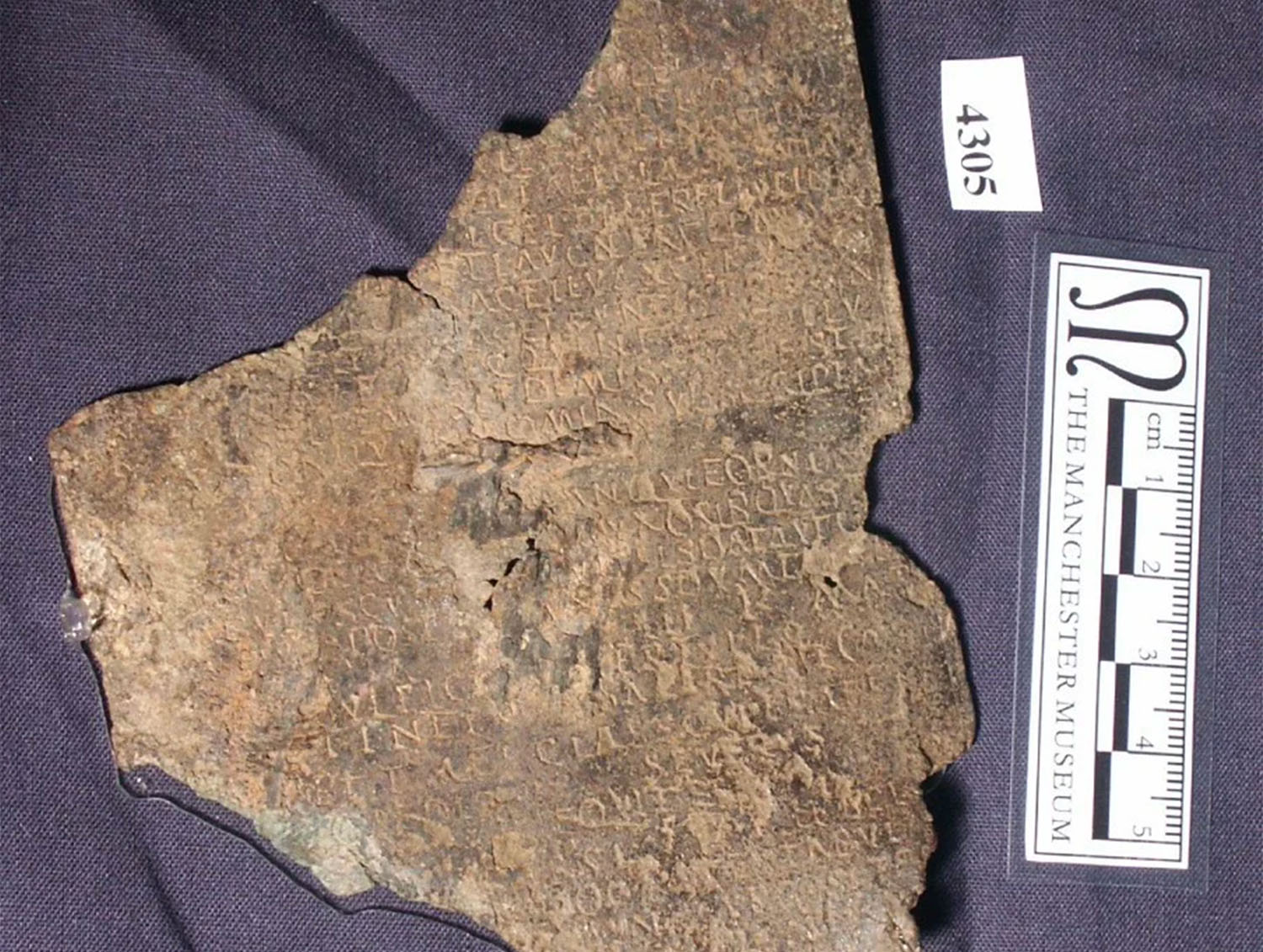
in മലയാളം / Malayalam translated by Divya & family
This object has been translated into 5 different languages by 5 different users
ഈ വെങ്കല പൗരത്വ അവാർഡിനുള്ള എഴുത്ത് (എഡി 158 അവാർഡ്) അത് ലഭിച്ച സൈനികൻ യഥാർത്ഥത്തിൽ സിറിയയിലെ ഹീലിയോപോളിസിൽ അഥവാ ബാൽബെക്കിൽ നിന്ന് വന്നതാണെന്ന് പറയുന്നു. റോമൻ സാമ്രാജ്യത്തിന്റെ വിവിധ ഭാഗങ്ങളിൽ നിന്നുള്ള തദ്ദേശീയരായ ആളുകൾ സൈന്യത്തിൽ സേവിക്കാൻ സൈനികരെ നൽകി. 25 വർഷത്തെ സേവനത്തിന് ശേഷം അവർക്ക് റോമൻ പൗരത്വം ലഭിച്ചിരുന്നു. റോമൻ പൗരത്വത്തിന്റെ രേഖകൾ ഒരു വെങ്കല ഷീറ്റിൽ ആണ് ആലേഖനം ചെയ്തിരുന്നത്. ഈ അവാർഡിന്റെ ഭാഗങ്ങൾ മെറ്റൽ ഡിറ്റക്ടറുകൾ വഴി ആണ് കണ്ടെത്തിയിരുന്നത്. പട്ടാളക്കാരുടെ പേര് നമുക്ക് അറിയില്ല. AD 135-8 കാലഘട്ടത്തിൽ യഹൂദയിലോ ഇസ്രായേലിലോ ഗുരുതരമായ കലാപം അടിച്ചമർത്താൻ സഹായിച്ച ഒരു റെജിമെന്റിൽ അദ്ദേഹം ചേർന്നതായി ഞങ്ങൾ കരുതുന്നു. പട്ടാളം വിട്ടതിനു ശേഷം അദ്ദേഹം വടക്ക് പടിഞ്ഞാറ് ഭാഗത്തു താമസിച്ചിട്ടുണ്ടാവണം. ഇതിന്റെ കണ്ടുപിടുത്തക്കാർ ആയ ജെയിംസിനും ഹോവാർഡ് മെഡോക്രോഫ്റ്റിനും 1996-ൽ ബിപി ബ്രിട്ടീഷ് ആർക്കിയോളജിക്കൽ അവാർഡ് ലഭിച്ചു. കുംബ്രിയയിലെ റാവൻഗ്ലാസിൽ കണ്ടെത്തിയത്.
This is an object from the Manchester Museum collection translated from English to the Indian language Malayalam.
Malayalam is a Dravidian language spoken very commonly in the Southern state of India called Kerala along with Indian territories Lakshadweep and Mahé, Puducherry.
Manchester has a vibrant Malayali community and a Manchester Malayalee association comprising of people from all age groups. This signifies the importance of having a translation in Malayalam of the museum objects thereby making the museum experience more welcoming, inclusive and wholesome.
ReportDo you have something you’d like to say, in your own language or English, about the object or translation? We’d like to hear what you think.
Translations are community-sourced and for anyone to participate in, however you use your language. For more information, see Community Guidelines.
19 Apr, 2023
These bronze tablets were used across the Roman Empire to record all elements of Roman Law. Another example is on display at the National Archeology Museum in Spain alongside the following description:
Discovered in Osuna, a town in Spain’s Seville province, this tablet is a record of the part of Roman law governing city life in the Roman city of Colonia Genua Iulia, named after the city’s founder, Julius Caesar.
The laws were enacted by Mark Anthony following Caesar’s death. However, the slabs actually date back to the times of the Flavian Dynasty in the second half of the 1st century AD. Around this time, some additions were made to the Lex Ursonensis, the city’s foundation charter. This text was originally made up of 142 sections, 73 of which have been uncovered with the discovery of these five tablets.
This type of legal tablet, used to write regulations into law on bronze for their long-term preservation, were displayed in public buildings. They became a crucial mode of communication, enabling the Romanisation of all the Empire’s cities under Roman law.
19 Apr, 2023
The original Spanish text reads:
Descubiertas en Osuna en 1870, estas tablas recogen parte de la ley que regulaba la vida municipal de esta ciudad romana llamada Colonia Genua Iulia, en honor de su fundador Julio César.
La ley fue promulgada por Marco Antonio, poco después de la muerte de César, pero estas piezas datan de época Flavia, segunda mitad del siglo I, fecha en la cual se intercalaron algunas anotaciones en la Lex Ursonensis. Este texto legal constaba originalmente de 142 capítulos de los que conservamos 73 distribuidos en cinco tablas.
Este tipo de tablas legales, donde la ley se fija por escrito en bronce, con el fin de que perduren mucho tiempo, eran expuestas para su lectura y conocimiento en edificios públicos, convirtiéndose en un medio de comunicación social primordial para conseguir la plena romanización de todas las ciudades del Imperio sujetas a Roma por el derecho latino.
You can read more here: http://ceres.mcu.es/pages/ResultSearch?Museo=MANT&txtSimpleSearch=Museo%20Espa%F1ol%20de%20Antig%FCedades.%20Tomo%20VIII.%20L%E1mina%202&simpleSearch=0&hipertextSearch=1&search=advancedSelection&MuseumsSearch=MANT|&MuseumsRolSearch=36&listaMuseos=[Museo%20Arqueol%F3gico%20Nacional%20(Colecci%F3n%20Tesoros%20del%20MAN)]